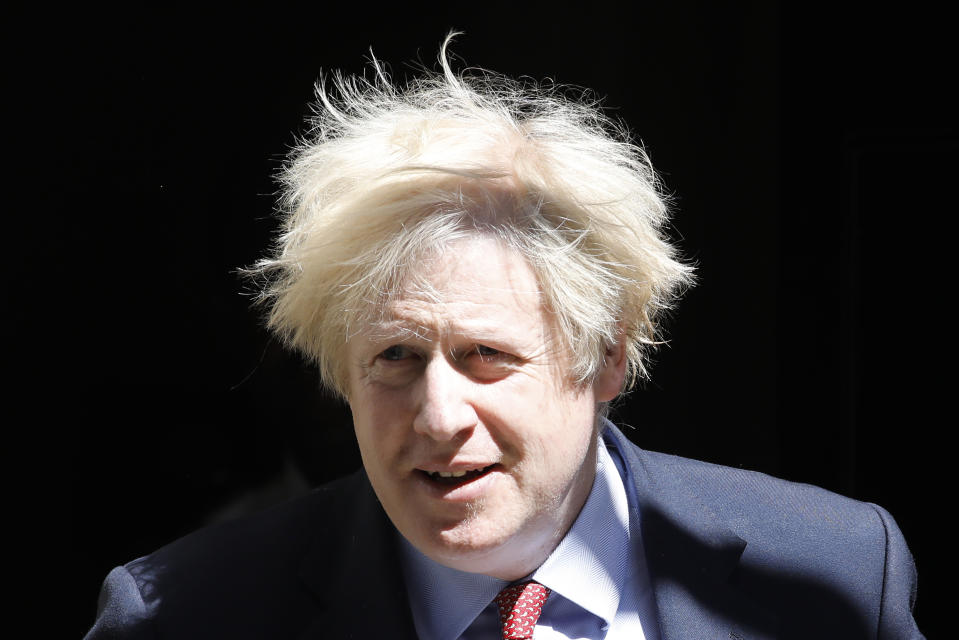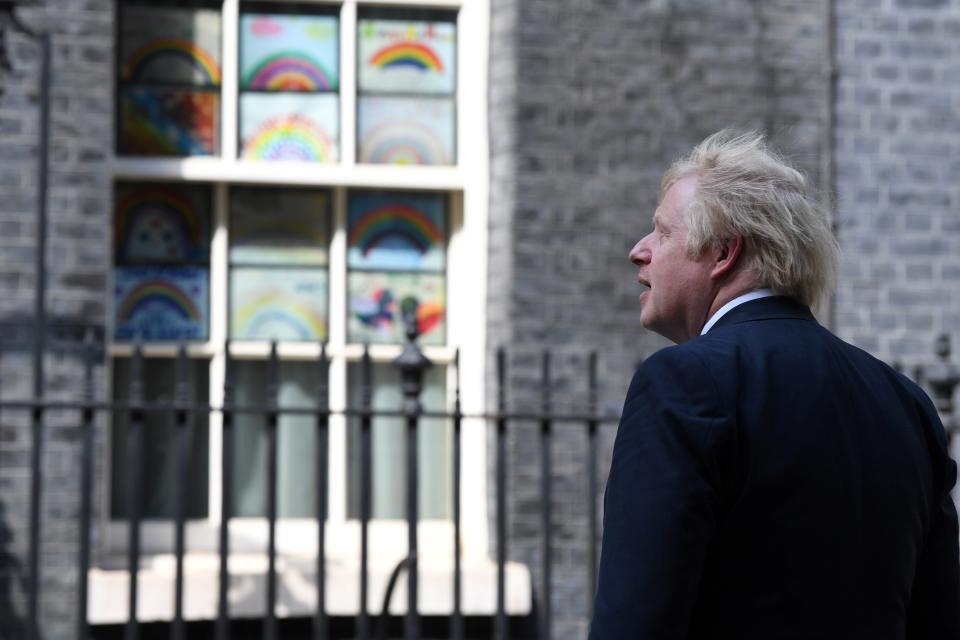Where's Boris? Has the PM really avoided scrutiny during coronavirus?

“I haven’t seen Boris very much. Where is the prime minister at the moment?”
These are not the words of Labour leader Sir Keir Starmer, but of TV presenter Susannah Reid on Good Morning Britain earlier this week.
Fellow presenter Piers Morgan also chipped in, of course, asking on Twitter: “Where are you?”
The UK has the second worst coronavirus death toll in the world, but Boris Johnson has only been seen a handful of times in the past few weeks.
Latest coronavirus news, updates and advice
Live: Follow all the latest updates from the UK and around the world
Fact-checker: The number of COVID-19 cases in your local area
6 charts and maps that explain how COVID-19 is spreading
At a time of such danger – described by Johnson himself as the “worst public health crisis for a generation” – is it normal for a leader to make so few public appearances?
Here, Yahoo News UK breaks it down…
Johnson’s attendance at the daily press conferences
On 16 March, just as the COVID-19 outbreak was beginning to take hold, Downing Street introduced the daily coronavirus press conferences.
The Number 10 briefings initially received viewing figures of more than 10 million, with Johnson fronting six of the first seven. He took another on 25 March, before testing positive for COVID-19 on 27 March.
At this point, he had taken seven out of 10 briefings (70%).
Since returning to work on 27 April, however, Johnson has fronted just two of 22 briefings (9%) he was able to attend.
Dr Mark Bennister, senior lecturer in politics at the University of Lincoln who researches political leadership, told Yahoo News UK: “It’s an important part of leadership, particularly when you announce policy, to communicate that policy, be accountable for it and be scrutinised for it.
“If you are chairing cabinet meetings and sitting in the office of prime minister, it is not a good sign of demonstrating you have got a full grasp of the detail and are prepared to defend your policies [if Johnson is not attending the briefings].
“It’s important to be visible in your communication, particularly during a crisis.”
How are other leaders approaching their press briefings?
In Scotland, first minister Nicola Sturgeon has been fronting almost every coronavirus briefing. The Scottish government has been holding these press conferences on most days of the week.
It has been a similar situation in New Zealand, where PM Jacinda Ardern has been taking the vast majority of the government’s press conferences.
In contrast, French president Emannuel Macron does not front his country’s press conferences, while German chancellor Angela Merkel only holds briefings after important cabinet meetings, as opposed to a fixed schedule.
Johnson’s attendance in the House of Commons
The PM’s appearances before MPs in parliament have been just as sparse as his attendance at press briefings.
Since returning to work on 27 April, Johnson has been in the chamber just four times: three for the obligatory Prime Minister’s Questions (PMQs) on Wednesdays and once for a statement on the partial lifting of lockdown restrictions on Monday last week.
Dr Bennister said: “That statement was the first prime ministerial statement on COVID-19, which is significant.

“It’s hard to do any kind of comparison because we are in uncharted waters, but the best comparison is Theresa May trying to manage the UK through Brexit.
“She was in the House pretty much every Monday morning giving a statement and taking questions over two hours. This was in addition to PMQs and occasional appearances before the liaison committee.
“You would really expect more [appearances in the Commons from Johnson], though there are mitigating circumstances in terms of ill health and parliament not being open.”
What is Johnson’s past form before the outbreak?
During the general election campaign, Johnson was criticised on numerous occasions for avoiding media interviews – before going on to win a huge majority.
Earlier this year, then-Labour leader Jeremy Corbyn labelled Johnson a “part-time prime minister” after the PM holidayed in a mansion rather than visit any of the communities hit by severe flooding.
“There has also been an obvious lack of engagement with the House of Commons,” Dr Bennister added. “Prior to the coronavirus outbreak, there was [already] very little engagement.”

He pointed to Johnson’s non-attendance at the liaison committee, which is the only committee in the Commons which can question a PM.
PMs tend to appear before the committee two or three times a year – but not Johnson, who has been in the job for 10 months.
Dr Bennister said: “He was due to attend on 11 September and 24 October last year. He pulled out of both.
“That’s another accountability mechanism… the PM is dragging his feet on. That relationship with parliament is clearly not what you would expect.”
Coronavirus: what happened today
Click here to sign up to the latest news, advice and information with our daily Catch-up newsletter
Read more about COVID-19
How to get a coronavirus test if you have symptoms
What you can and can’t do under lockdown rules
In pictures: How UK school classrooms could look in new normal
How public transport could look after lockdown
How our public spaces will change in the future
Help and advice
Read the full list of official FAQs here
10 tips from the NHS to help deal with anxiety
What to do if you think you have symptoms
How to get help if you've been furloughed

 Yahoo Finance
Yahoo Finance 
